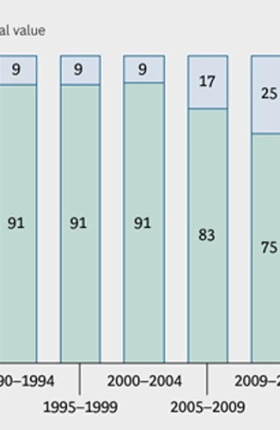After two years of decline, the mergers and acquisitions (M&A) market is recovering at a gathering pace. The number and value of deals rose in 2010, financial markets continued their revival, and private equity (PE) began to return to M&A. A recent BCG survey found that large European companies were optimistic about the outlook for deals in 2011, with growth in emerging markets a priority for many. While concerns remain about the anemic recovery in developed markets and the threat of sovereign-debt crises, many of the ingredients are in place for a new wave of M&A.
This latest edition of BCG’s annual M&A report looks at the opportunities for companies to transform their competitive position through M&A. It sets out the findings of new research by the BCG M&A Research Center into the patterns and behaviors of the world’s most successful acquirers. Drawing on a unique global database that now contains information on more than 26,000 M&A transactions since 1988, the research confirms that the majority of acquisitions of public companies by other public companies destroy value for the acquirer. But it also casts light on the factors that help a minority of acquisitions to produce positive returns, identifying the drivers of value in M&A.
The critical factors in successful acquisitions are the selection of targets, the timing of bids, and the management of the whole M&A process. Companies that understand those issues will be better placed to ride the latest wave of M&A.
Acknowledgments
This report is the product of BCG’s Corporate Development practice. The authors would like to acknowledge the contributions of their colleagues Pedro Esquivias, Daniel Friedman, Tawfik Hammoud, Gerry Hansell, Jérôme Hervé, Peter Nowotnik, and Daniel Stelter.
The authors would also like to thank Dominic C. Klemmer, Blas Bracamonte, Markus Brummer, Kerstin Hobelsberger, and Dirk Schilder of BCG’s Corporate Finance Task Force and the M&A Research Center for their extensive support. Special contributions were made by Prof. Dr. Bernhard Schwetzler , the chair of financial management at the Leipzig Graduate School of Management (HHL), who supported this report as academic advisor, overlooking the PhD thesis of Dominic C. Klemmer. The authors especially thank him, as well as Dr. Marco O. Sperling, assistant professor at HHL, for their continued support.






